Tattoo ink allergy symptoms. Tattoo Ink Allergy: 7 Unexpected Skin Reactions and Treatment Options
What are the common symptoms of tattoo ink allergies. How can you identify unexpected skin reactions to tattoos. What treatments are available for tattoo-related skin issues. When should you seek medical attention for tattoo complications.
Understanding Tattoo Ink Allergies: Causes and Risk Factors
Tattoo ink allergies occur when the body’s immune system reacts negatively to the components in tattoo pigments. While tattoos have become increasingly popular, it’s crucial to understand that not everyone’s skin responds well to the intrusion of foreign substances.
Common causes of tattoo ink allergies include:
- Metals in pigments (e.g., nickel, cobalt, chromium)
- Organic compounds in colored inks
- Preservatives and other additives in tattoo inks
- Pre-existing skin sensitivities or conditions
Are certain individuals more prone to developing tattoo ink allergies? Those with a history of allergies, sensitive skin, or autoimmune disorders may be at higher risk. Additionally, the location of the tattoo can influence the likelihood of an allergic reaction, with areas of thin or delicate skin being more susceptible.
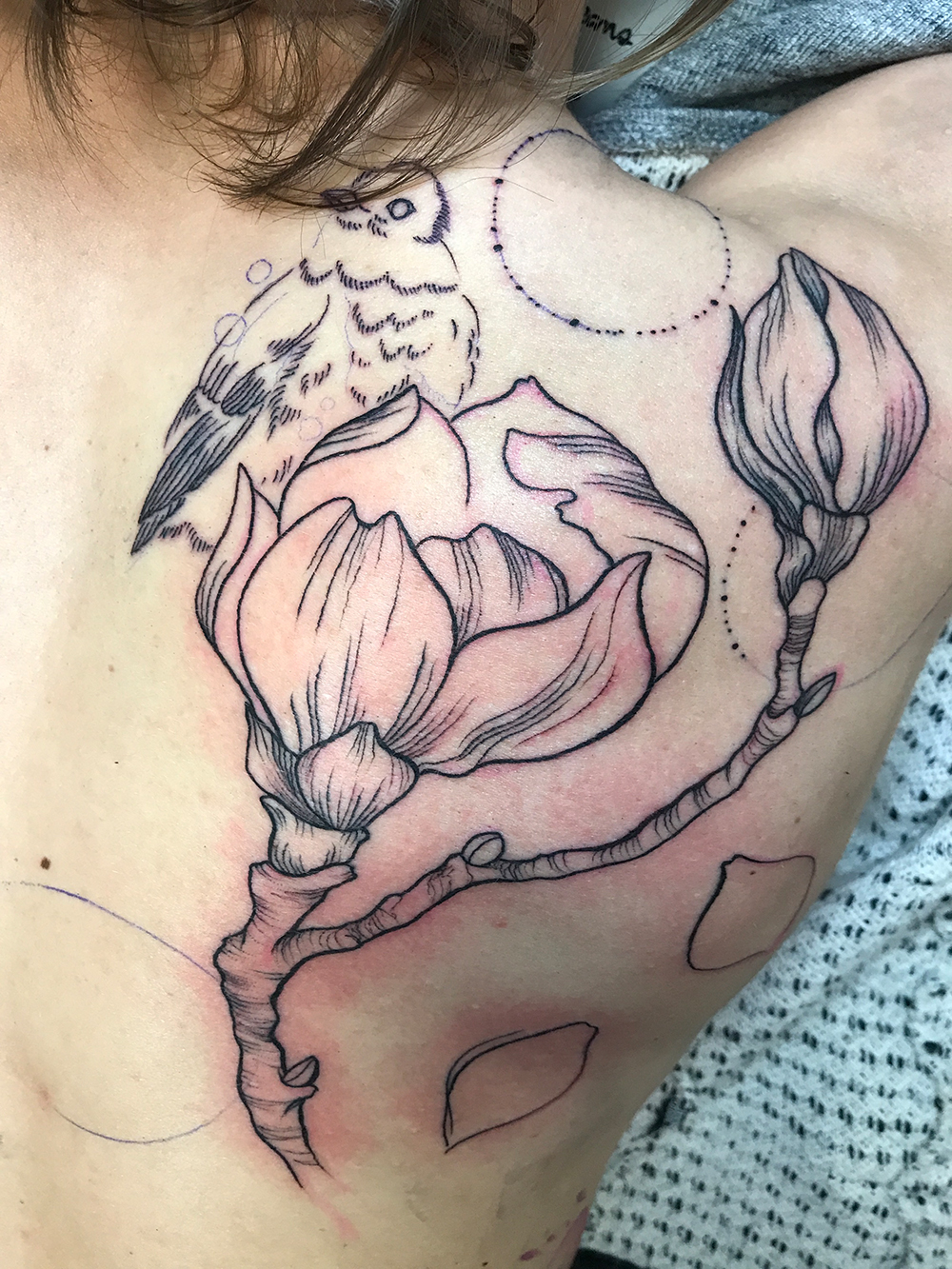
7 Unexpected Skin Reactions to Tattoo Ink
While some degree of irritation is normal immediately after getting a tattoo, certain reactions can indicate a more serious issue. Here are seven unexpected skin reactions that may occur due to tattoo ink allergies:
1. Persistent Itching and Burning Sensation
Itching and burning that persists beyond the initial healing period can be a sign of an allergic reaction. This discomfort may range from mild to severe and can significantly impact daily life.
2. Raised, Scaly Patches
The development of raised, scaly patches on or around the tattooed area may indicate a condition called lichenoid reaction. This can occur weeks, months, or even years after getting the tattoo.
3. Photosensitivity
Some individuals may experience increased sensitivity to sunlight in the tattooed area. This can manifest as a burning sensation, redness, or even blistering when exposed to UV rays.
4. Granulomas
Granulomas are small, bump-like formations that can develop around tattoo pigments. These nodules are the body’s attempt to isolate foreign substances and can be particularly common with red ink.
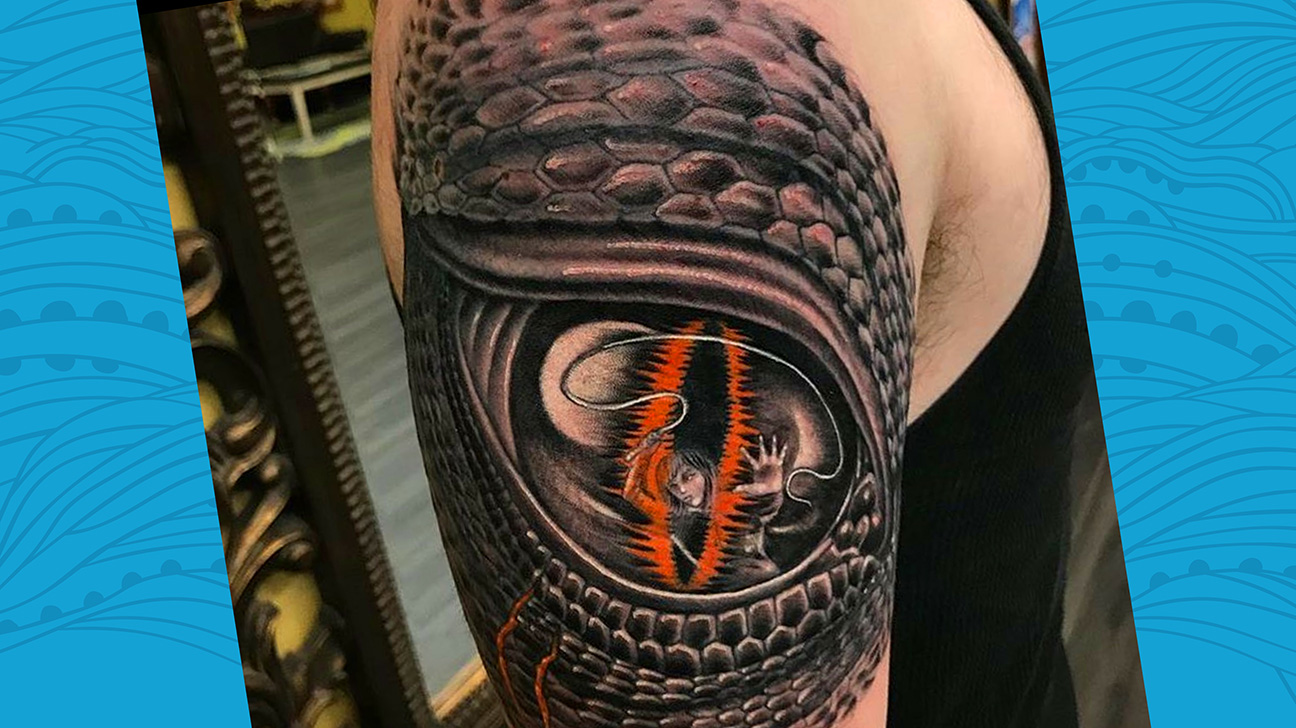
5. Keloid Formation
While not strictly an allergic reaction, some people may develop keloids – raised, thickened scars – in response to the trauma of tattooing. This is more common in individuals prone to keloid formation.
6. Lymph Node Swelling
In rare cases, tattoo pigments can migrate to nearby lymph nodes, causing them to swell. This can be mistaken for more serious conditions and may require medical evaluation.
7. Systemic Allergic Reactions
Though uncommon, some individuals may experience systemic allergic reactions that extend beyond the tattooed area. Symptoms can include fever, general malaise, and in severe cases, anaphylaxis.
Identifying Tattoo Ink Allergy Symptoms
Recognizing the signs of a tattoo ink allergy is crucial for timely intervention. How can you differentiate between normal healing and an allergic reaction? Here are key indicators to watch for:
- Persistent redness, swelling, or warmth beyond the initial healing period
- Formation of blisters or fluid-filled bumps
- Excessive flaking or peeling of the skin
- Changes in tattoo color or appearance
- Development of a rash or hives around the tattoo
Is it normal for a new tattoo to itch? While mild itching during the healing process is common, intense or prolonged itching may signal an allergic reaction. If you experience any of these symptoms, especially if they persist or worsen over time, it’s advisable to consult a dermatologist.
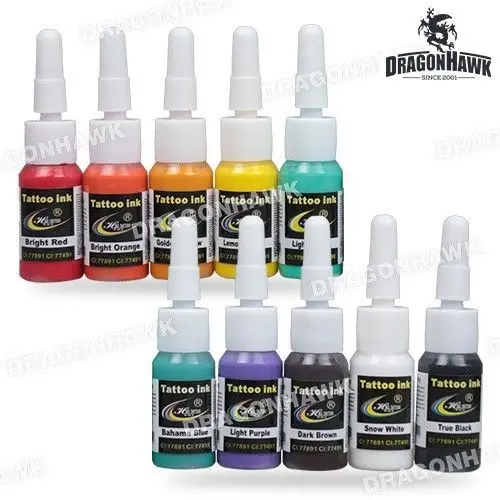
Treatment Options for Tattoo Ink Allergies
Managing tattoo ink allergies requires a tailored approach based on the severity and nature of the reaction. Here are some common treatment options:
Topical Treatments
Over-the-counter or prescription topical corticosteroids can help reduce inflammation and alleviate itching. In some cases, dermatologists may recommend topical immunomodulators to suppress the immune response in the affected area.
Oral Medications
For more severe reactions, oral antihistamines or corticosteroids may be prescribed to manage systemic symptoms and provide relief from itching and inflammation.
Laser Therapy
In cases where the allergic reaction is persistent or severe, laser therapy may be considered to break down the tattoo pigments. This can help reduce the body’s immune response to the ink.
Surgical Excision
As a last resort, surgical removal of the tattooed skin may be necessary. This is typically only considered in cases of severe, chronic reactions that don’t respond to other treatments.
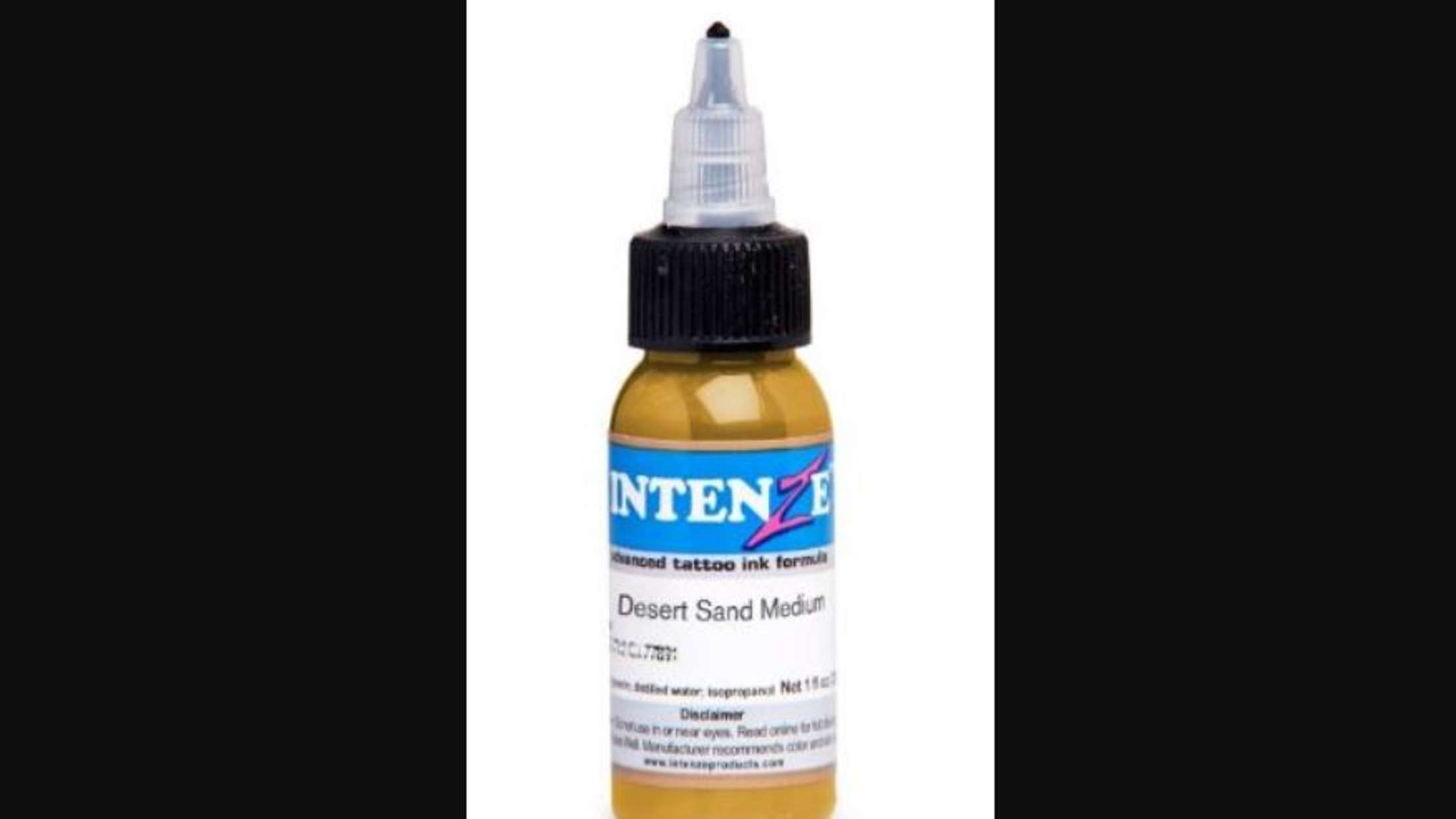
Can tattoo ink allergies resolve on their own? While some mild reactions may improve over time, it’s essential to seek medical advice for proper diagnosis and treatment, especially for persistent or severe symptoms.
Preventing Tattoo Ink Allergies: Best Practices
While it’s not always possible to predict how your body will react to tattoo ink, there are steps you can take to minimize the risk of allergic reactions:
- Research reputable tattoo artists and studios that prioritize hygiene and use high-quality inks
- Consider patch testing for ink sensitivity before getting a large tattoo
- Disclose any known allergies or skin conditions to your tattoo artist
- Follow proper aftercare instructions to promote healing and reduce the risk of complications
- Avoid getting tattoos on areas of skin with existing conditions or sensitivities
How can you determine if a tattoo studio follows safe practices? Look for proper licensing, sterilization procedures, and artists who are willing to discuss their ink sourcing and safety protocols.

When to Seek Medical Attention for Tattoo Complications
While some minor irritation is normal during the healing process, certain symptoms warrant immediate medical attention. Seek help if you experience:
- Signs of infection, such as fever, chills, or pus-like discharge
- Severe pain, swelling, or redness that spreads beyond the tattoo
- Difficulty breathing or swallowing
- Rapid heartbeat or dizziness
- Persistent or worsening allergic symptoms despite home care
Should you consult a dermatologist or your general practitioner for tattoo-related issues? While your primary care physician can provide initial guidance, a dermatologist specializes in skin conditions and may be better equipped to diagnose and treat tattoo-specific reactions.
Legal and Regulatory Considerations for Tattoo Inks
The regulation of tattoo inks varies globally, which can impact consumer safety. In some regions, tattoo inks are subject to strict oversight, while in others, regulations may be less stringent. Understanding the legal landscape can help consumers make informed decisions.
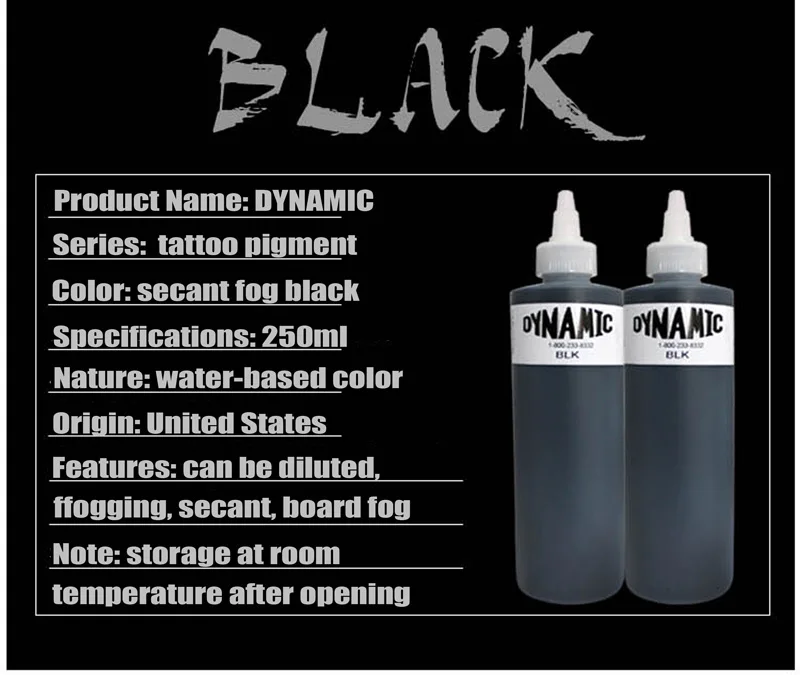
FDA Regulations in the United States
In the U.S., the Food and Drug Administration (FDA) considers tattoo inks to be cosmetics but does not actively regulate their production. However, the FDA can intervene if safety issues arise.
European Union Regulations
The EU has implemented more comprehensive regulations on tattoo inks, including restrictions on certain pigments and requirements for ingredient labeling.
How can consumers ensure the safety of tattoo inks? Research local regulations, choose reputable artists who source high-quality inks, and don’t hesitate to ask questions about the products being used.
Emerging Research and Future Developments in Tattoo Safety
The field of tattoo safety is continuously evolving, with ongoing research into ink composition, long-term effects, and improved diagnostic and treatment methods for allergic reactions.
Biocompatible Inks
Scientists are exploring the development of more biocompatible tattoo inks that may reduce the risk of allergic reactions and other complications.

Advanced Diagnostic Tools
New technologies are being developed to better identify the specific components causing allergic reactions, potentially leading to more targeted treatments.
Improved Removal Techniques
Research into more effective and less invasive tattoo removal methods may provide better options for those experiencing persistent allergic reactions.
What advancements can we expect in tattoo safety in the coming years? While it’s difficult to predict specific breakthroughs, the trend towards safer, more regulated tattoo practices is likely to continue, driven by consumer demand and scientific research.
As tattoos continue to grow in popularity, understanding the potential risks and taking proactive steps to ensure safety becomes increasingly important. By staying informed about tattoo ink allergies, their symptoms, and treatment options, individuals can make more informed decisions about body art and respond effectively if complications arise. Remember, while tattoos can be a beautiful form of self-expression, your health and safety should always be the top priority.

7 unexpected skin reactions and what to do about them
Diseases & conditions
-
Coronavirus Resource Center
-
Acne
-
Eczema
-
Hair loss
-
Psoriasis
-
Rosacea
-
Skin cancer
-
A to Z diseases
-
A to Z videos
- DIY acne treatment
- How dermatologists treat
- Skin care: Acne-prone skin
- Causes
- Is it really acne?
- Types & treatments
- Childhood eczema
- Adult eczema
- Insider secrets
- Types of hair loss
- Treatment for hair loss
- Causes of hair loss
- Hair care matters
- Insider secrets
- What is psoriasis
- Diagnosis & treatment
- Skin, hair & nail care
- Triggers
- Insider secrets
- What is rosacea
- Treatment
- Skin care & triggers
- Insider secrets
- Types and treatment
- Find skin cancer
- Prevent skin cancer
- Raise awareness
- Español
Featured
How Natalie cleared her adult acne
Natalie tried many acne products without success. Find out how a board-certified dermatologist helped Natalie see clear skin before her wedding.
Find out how a board-certified dermatologist helped Natalie see clear skin before her wedding.
JAK inhibitors: A newer type of medication
JAK inhibitors are helping patients with alopecia areata, eczema/atopic dermatitis, psoriasis, and vitiligo. Here’s what you need to know.
Everyday care
-
Skin care basics
-
Skin care secrets
-
Injured skin
-
Itchy skin
-
Sun protection
-
Hair & scalp care
-
Nail care secrets
- Basic skin care
- Dry, oily skin
- Hair removal
- Tattoos and piercings
- Anti-aging skin care
- For your face
- For your skin routine
- Preventing skin problems
- Bites & stings
- Burns, cuts, & other wounds
- Itch relief
- Poison ivy, oak & sumac
- Rashes
- Shade, clothing, and sunscreen
- Sun damage and your skin
- Aprenda a proteger su piel del sol
- Your hair
- Your scalp
- Nail care basics
- Manicures & pedicures
Featured
Practice Safe Sun
Everyone’s at risk for skin cancer. These dermatologists’ tips tell you how to protect your skin.
These dermatologists’ tips tell you how to protect your skin.
Relieve uncontrollably itchy skin
Find out what may be causing the itch and what can bring relief.
Darker Skin Tones
-
Skin care secrets
-
Hair care
-
Hair loss
-
Diseases & Conditions
- Acne
- Dark spots
- Dry skin
- Light spots
- Razor bumps
- Caring for Black hair
- Scalp psoriasis
- Weaves & extensions
- Central centrifugal cicatricial alopecia
- Frontal fibrosing alopecia
- Hairstyles that pull can cause hair loss
- Acanthosis nigricans
- Acne keloidalis nuchae
- Hidradenitis suppurativa
- Keloid scars
- Lupus and your skin
- Sarcoidosis and your skin
- Skin cancer
- Vitiligo
- More diseases & conditions
Featured
Fade dark spots
Find out why dark spots appear and what can fade them.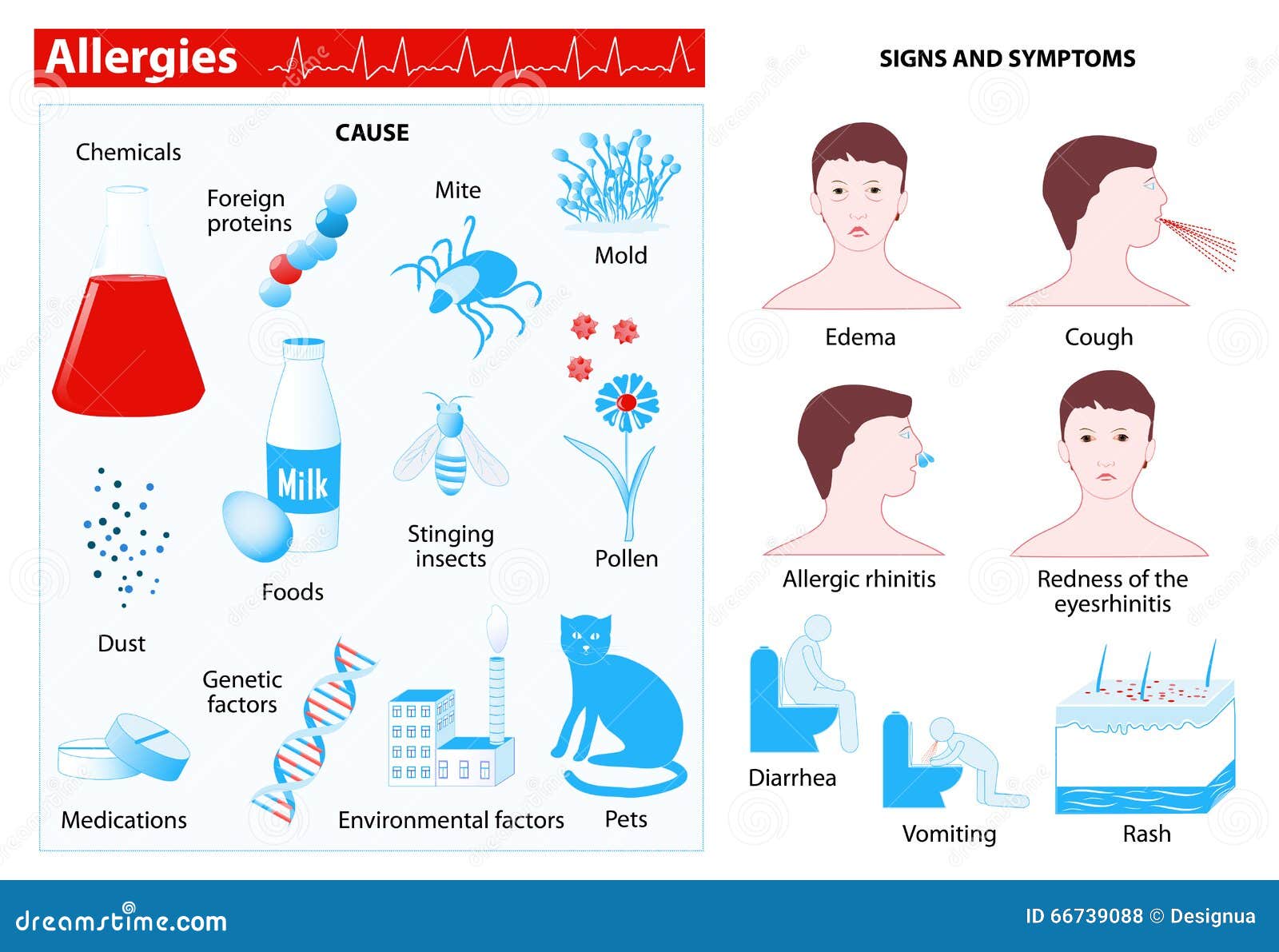
Untreatable razor bumps or acne?
If you have what feels like razor bumps or acne on the back of your neck or scalp, you may have acne keloidalis nuchae. Find out what can help.
Cosmetic treatments
-
Your safety
-
Age spots & dark marks
-
Cellulite & fat removal
-
Hair removal
-
Scars & stretch marks
-
Wrinkles
-
Younger-looking skin
Featured
Laser hair removal
You can expect permanent results in all but one area. Do you know which one?
Do you know which one?
Scar treatment
If you want to diminish a noticeable scar, know these 10 things before having laser treatment.
Botox
It can smooth out deep wrinkles and lines, but the results aren’t permanent. Here’s how long botox tends to last.
Public health programs
-
Skin cancer awareness
-
Free skin cancer screenings
-
Kids’ camp
-
Good Skin Knowledge
-
Shade Structure grants
-
Skin Cancer, Take a Hike!™
-
Awareness campaigns
-
Flyers & posters
-
Get involved
- Lesson plans and activities
- Community grants
Featured
Free materials to help raise skin cancer awareness
Use these professionally produced online infographics, posters, and videos to help others find and prevent skin cancer.
Dermatologist-approved lesson plans, activities you can use
Free to everyone, these materials teach young people about common skin conditions, which can prevent misunderstanding and bullying.
Find a dermatologist
-
Find a dermatologist
-
What is a dermatologist?
-
FAAD: What it means
-
How to select a dermatologist
-
Telemedicine appointments
-
Prior authorization
-
Dermatologists team up to improve patient care
Featured
Find a Dermatologist
You can search by location, condition, and procedure to find the dermatologist that’s right for you.
What is a dermatologist?
A dermatologist is a medical doctor who specializes in treating the skin, hair, and nails. Dermatologists care for people of all ages.
Rash and Other Reactions to Ink, Treatment & More
It’s not unusual to notice some irritation or swelling after getting inked. But getting a tattoo can also cause an allergic reaction. Skin can swell, itch, and ooze with pus. Most reactions are tied to certain inks.
This hypersensitivity often presents as contact dermatitis or photosensitivity.
You can usually treat mild cases at home. But if your symptoms persist — or are more severe from the start — you’ll need to see a doctor or other healthcare professional for diagnosis and treatment.
Read on to find out what symptoms to watch for, how to tell the difference between an allergy and an infection, your options for treatment, and more.
Allergy symptoms vary by severity. Some are simply skin-deep and resolve in a few days.
Mild allergic reactions can cause:
- itching
- rashes or bumps
- redness or irritation
- skin flaking
- swelling or fluid buildup around tattoo ink
- scaly skin around tattoo
- skin tags or nodules
More severe reactions can affect your entire body. See a doctor or other healthcare provider if you begin to experience:
- intense itching or burning around the tattoo
- pus or drainage oozing from the tattoo
- hard, bumpy tissue
- chills or hot flashes
- fever
Seek emergency medical help if you develop swelling around your eyes or have difficulty breathing.
Although the symptoms are often similar, there are a few key differences that may help you distinguish between the two.
Allergic reaction
Share on Pinterest© DermNet New Zealand
These symptoms only affect the skin near your tattoo. Think localized itching, burning, swelling, and redness. You shouldn’t have any allover symptoms.
Think localized itching, burning, swelling, and redness. You shouldn’t have any allover symptoms.
If the ink is to blame, your symptoms will only appear around the offending pigment. Red ink is the most common allergen.
Often, your symptoms will only last for a few days. In some cases, symptoms may last for a few weeks before disappearing entirely.
Infection
Share on Pinterest
Infection can also cause redness, irritation, and itching, but these symptoms typically extend beyond the tattooed area.
Surface symptoms may be present in addition to those that affect your entire body, such as fever or chills.
Infection symptoms also tend to last much longer — anywhere from a few days to a week or more.
Not all tattoo reactions are the same. Your reaction could result from:
- an immune system response
- a skin condition
- overexposure to light or other allergens
Acute inflammatory reactions
You don’t have to be allergic to the ink or other materials to have reactions to tattoos. Sometimes, the process itself can irritate your skin.
Sometimes, the process itself can irritate your skin.
Many people experience mild redness, swelling, and itching after getting a tattoo. These symptoms typically clear up within a couple of weeks.
Photosensitivity
The ingredients in certain inks can react with sunlight or other bright lights. This can cause swelling, redness, and itchy bumps.
Yellow, black, red, and blue inks are the most common offenders.
Dermatitis
If you’re allergic to the ink itself, you may develop symptoms of contact dermatitis. This includes swelling, itching, and flaking.
Contact dermatitis is often associated with red inks.
Granulomas
A number of ink ingredients are known to cause granulomas, or red bumps. These ingredients include:
- mercury salts
- iron oxides
- cobalt chloride
- manganese
Overall, they’re most commonly tied to red inks.
Lichenoid reactions
A lichenoid reaction happens when small, discolored bumps appear around where the ink was injected. It’s most common with red inks.
It’s most common with red inks.
These bumps aren’t usually irritating or itchy, but they can appear beyond the area where ink was injected.
Pseudolymphomatous reactions
If your symptoms don’t immediately appear after getting your tattoo, you may be experiencing a pseudolymphomatous reaction. It’s usually in response to red inks.
In these cases, rash, red skin growths, or other irritation may not appear for several months afterward.
Tattoo allergies are often caused by ingredients in tattoo inks, such as pigments, dyes, or metallic substances.
Some inks now contain dyes made from the same components used in car paint and commercial printing. These can all stimulate an immune response as your body attempts to remove the ink as if it’s a foreign invader.
Tattoo ink isn’t regulated by the Food and Drug Administration (FDA), so you may not always know exactly what’s in your ink. But the FDA does compile reports of people’s negative responses to certain ingredients.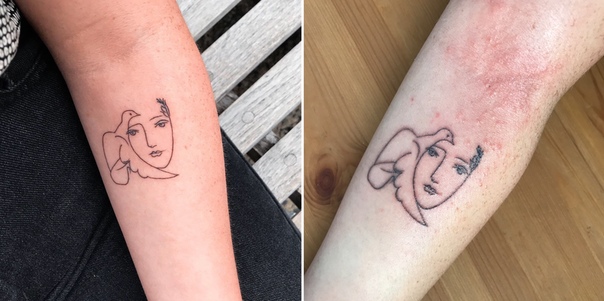
It’s best to ask your tattoo artist for the inks they use and look for any ingredients that may cause a reaction or may be documented as potentially harmful.
Here are some ingredients that may cause allergic reactions:
- aluminum
- aminoazobenzene
- brazilwood
- cadmium sulfide
- carbon (also called “India ink”)
- chromic oxide
- cobalt aluminate
- cobalt chloride
- ferric hydrate
- ferric oxide
- iron oxide
- lead chromate
- manganese
- mercury sulfide
- phthalocyanine dyes
- sandalwood
- titanium oxide
- zinc oxide
Notice any swelling, oozing, or other signs of irritation? Stop by your tattoo shop to let your artist know what you’re experiencing.
Also ask your artist about the inks they used and the processes they followed to inject the ink. These details will help a doctor or other healthcare professional determine what exactly caused the reaction and how to best treat it.
Once you have this information, see a doctor right away. Let them know that you recently got a tattoo, and tell them about your symptoms. Make sure you relay any information that you got from your tattoo artist too.
If your symptoms are mild, you may be able to use over-the-counter (OTC) medications to find relief.
OTC antihistamines like diphenhydramine (Benadryl) may help reduce overall symptoms. Topical ointments, such as hydrocortisone or triamcinolone cream (Cinolar), may help soothe local inflammation and other irritation.
If OTC methods aren’t working, your healthcare provider may be able to prescribe a stronger antihistamine or other medication to help ease your symptoms.
Infections will likely require taking antibiotics.
Removal isn’t usually necessary. If you take care of the affected area, your symptoms will likely fade after a few days without leaving any visible marks or scars behind.
In severe cases, untreated allergic reactions and infections can disrupt the ink and disfigure the tattoo.
Identifying the reason for your reaction can help you decide what to do next. Your artist may be able to touch up or add on to the tattoo to hide the blemishes.
If your skin is unable to endure additional ink and you don’t want to leave the art as is, removal may be an option. See a doctor or other healthcare provider to discuss your options.
The best way to prepare is to learn more about your reaction to other allergens and to research your potential tattoo artist.
First, take the following into account before you decide to get any tattoo:
- Find out whether you have any common allergies. If you can, make an appointment with an allergist and tell them about your previous allergic reactions. They may be able to test for related allergens and help you identify other ingredients or triggers to avoid.
- Find out whether you have any underlying skin conditions. Some conditions, such as psoriasis and eczema, may make you more prone to adverse reactions.

- Don’t get a tattoo if you’re sick or your immune system is weakened. A weak immune system can make you more susceptible to allergic reactions.
Then, make sure you choose a reputable artist and shop. Run through the following checklist before getting a tattoo:
- Does the shop have a license? Licensed tattoo shops are regularly inspected for health and safety violations.
- Does the shop have a good reputation? Check out online reviews or ask friends who have tattoos. Visit a few shops before you decide on one.
- Does the shop use ink with safe ingredients? Ask your tattoo artist about the inks they use. Make sure you tell them about any previous allergic reaction.
- Does the artist observe safe practices? Your artist should put on a new pair of gloves before setting up new sterilized needles to use during your appointment.
can you be allergic to them?
Is the ink used for tattoos dangerous?
When you get a tattoo, the ink is injected into the dermis of your skin and it stays there for a long time. This is the reason why you should only use high quality professional ink . Professional inks may contain iron oxide and plastics. Homemade or traditional ink can be made from pen ink, dirt or even blood .
This is the reason why you should only use high quality professional ink . Professional inks may contain iron oxide and plastics. Homemade or traditional ink can be made from pen ink, dirt or even blood .
Most people who have an allergic reaction to tattoo ink have a reaction predominantly to reds and yellows , but only 0.5% of the population is affected. They say that it’s not the color ink itself, problems appear when mixing colors. Most professional tattoo artists purchase inks that are pre-mixed with thick paint, some choose to mix their own dry pigment and thinner. Metal-rich ink may not be suitable for use on leather. In some cases, allergies occur precisely for this reason. Some tattoo inks contain mercury , but the use of these inks has declined significantly in recent years. Here are the elements that cause an allergic reaction – nickel, cadmium and chromium. These substances are sometimes found in jewelry, so if you’ve ever had an allergic reaction to jewelry, be careful.
The main symptoms of allergy are usually itching, redness, mild swelling, but most often all symptoms disappear after a few days. If symptoms persist or the unhealed tattoo begins to ooze or bleed, seek medical attention , tattoo artist not a doctor
Do you have any other types of allergies?
Most people who are allergic to tattoo ink are also allergic to other dyes found in food or clothing. If you have this kind of a allergy, you can ask your tattoo artist to do a preliminary test on how your skin reacts to the paint that he is going to use. However, tests of this kind may not always give a hundred percent correct result . Although the main reaction will be visible immediately, some side effects may take up to a month to appear.
For those who have an adverse reaction only after a year, and this may be, there will be a characteristic reaction – itching of the skin. It can also be a reaction to weather conditions. If you feel itchy at the tattoo site in hot weather, it may be due to an allergy to the ink when it is heated .
It can also be a reaction to weather conditions. If you feel itchy at the tattoo site in hot weather, it may be due to an allergy to the ink when it is heated .
There are medications that can help you get rid of unpleasant allergic reactions to ink soon after getting a tattoo. These are usually antibiotic ointments or hydrocortisone, and you can also try anti-itch creams and cold compresses. If symptoms do not disappear within a week or so, it is advisable to consult a dermatologist .
Things to know before you go for your first tattoo
If you are considering getting your first tattoo and are worried about allergies, here are a few steps you should take before going for a session.
Visit your tattoo artist before “Day X”
When you go to consult with your tattoo artist, ask him to give you a list of the elements that make up the ink. If he or she does not have this information, ask for the brand of ink and color. Then you can independently find out the chemical composition of this paint and possible skin reactions. If any are noticed, then you can ask the tattoo artist to change the brand of ink .
Then you can independently find out the chemical composition of this paint and possible skin reactions. If any are noticed, then you can ask the tattoo artist to change the brand of ink .
Test ink before global use
Ask your tattoo artist to test the ink on your skin at least 24 hours before your main session. Moreover, the tattoo artist must inject a drop of ink on the skin exactly in the place where the future tattoo is planned. If you have not experienced any discomfort beyond the norm, then everything is in order. Or you should try to choose a different type of ink.
Do final test
Make only a small dot of your tattoo . If the previous test could just be done in advance at any time, then this test, essentially the same, must be done exactly 24 hours before the session to be sure. Any redness, irritation, or swelling may indicate that you are allergic to the tattoo ink.
Tattoo ink tests
Karin Lehner of Regensburg University in Germany together with her staff published their study in the journal Contact Dermatitus. The study was carried out using precise laboratory methods that can detect even the smallest traces of chemical compounds in various commercially available black pigment inks. The compounds are primarily composed of coal and soot and have names such as Black Magic Diabolo Genesis. The results of these tests were not encouraging. It was discovered that some paints not only damaged skin cells, but also DNA cells, causing a risk of skin cancer.
The study was carried out using precise laboratory methods that can detect even the smallest traces of chemical compounds in various commercially available black pigment inks. The compounds are primarily composed of coal and soot and have names such as Black Magic Diabolo Genesis. The results of these tests were not encouraging. It was discovered that some paints not only damaged skin cells, but also DNA cells, causing a risk of skin cancer.
However, many of these tests were done on Japanese paint brands that do not meet European standards. Dr. Paul Broganelli , specialist in dermatology and venereology, University Hospital of Turin , noted that the tests were carried out only on black ink, which has the highest concentration of harmful substances. Using this black ink caused a reaction only 7% of the time . Although the words of Dr. Paul Broganelli are encouraging, it is a very good idea to know the type of ink you have and the individual reaction to your body in advance.
Additional recommendations for phosphor and fluorescent inks.
Both types of ink glow in the dark and can be used for tattoos. Glow in the dark ink retains light and uses it to glow in the dark. Fluorescent ink does not glow in the dark, but reacts to UV light, which causes it to glow. The safety of using such inks on human skin is widely discussed in the tattoo community.
How to Identify and Treat a Tattoo Allergy – Drink-Drink
Things to Consider
It is normal to notice irritation or swelling after applying the ink. But reactions to tattoos can go beyond simple annoyance. The skin may swell, itch, and pus.
Most allergic reactions are associated with certain dyes. This hypersensitivity is often manifested by contact dermatitis or photosensitivity.
You can usually treat mild cases at home. But if your symptoms persist or become more severe from the start, you need to see a doctor or other healthcare professional for diagnosis and treatment.
Read on to find out what symptoms to look out for, how to tell an allergy from an infection, treatment options, and more.
How to spot an allergic reaction
Allergy symptoms vary in severity. Some are just superficial and go away after a few days.
Mild allergic reactions may cause:
- itching
- rash or bumps
- redness or irritation
- skin peeling
- swelling or fluid buildup around the tattoo ink
- peeling skin around the tattoo
- skin tags or nodules
More serious reactions can affect your entire body. Call your doctor or other health care provider if you begin to experience:
- severe itching or burning around the tattoo
- pus or drainage leaking from the tattoo
- hard, lumpy tissue
- chills or hot flashes
- fever
Get emergency medical help if you have swelling around your eyes or difficulty breathing.
What is the difference between an allergy and an infection?
Although the symptoms are often similar, there are a few key differences that can help you tell them apart.
Allergic reaction
These symptoms only affect the skin near the tattoo. Think of localized itching, burning, swelling, and redness. You should not have general symptoms.
If the ink is the culprit, your symptoms will only appear around the irritating pigment. Red ink is the most common allergen.
Often your symptoms will only last a few days. In some cases, symptoms may persist for several weeks before disappearing completely.
Infection
Infection can also cause redness, irritation and itching, but these symptoms usually extend beyond the area of the tattoo.
Superficial symptoms may be present in addition to those that affect your whole body, such as fever or chills.
The symptoms of the infection also tend to last much longer, from a few days to a week or more.
Are there different types of reactions to tattoos?
Not all reactions to tattoos are the same. Your reaction may be due to:
- immune system reaction
- skin condition
- excessive exposure to light or other allergens
Acute inflammatory reactions
You don’t have to be allergic to ink or other materials to have a reaction to tattoos. Sometimes the process itself can irritate the skin.
Sometimes the process itself can irritate the skin.
Many people experience mild redness, swelling and itching after getting a tattoo. These symptoms usually disappear within a few weeks.
Light sensitivity
Some ink ingredients may react with sunlight or other strong light. This can cause swelling, redness, and itching.
The most common offenders are yellow, black, red and blue ink.
Dermatitis
If you are allergic to the ink itself, you may develop symptoms of contact dermatitis. This includes swelling, itching and flaking.
Contact dermatitis is often associated with red ink.
granulomas
A number of ink ingredients are known to cause granulomas or red bumps. These ingredients include:
- mercury salts
- iron oxides
- cobalt chloride
- manganese
In general, they are most commonly associated with red ink.
Lichenoid reactions
A lichenoid reaction occurs when small discolored bumps appear around the injection site. Most often it is red ink.
Most often it is red ink.
These bumps are not usually irritating or itchy, but may appear outside the area where the ink was injected.
Pseudolymphomatous reactions
If symptoms do not appear immediately after tattooing, you may have a pseudolymphomatous reaction. This is usually a reaction to red ink.
In these cases, a rash, red growths on the skin, or other irritation may not appear for several months immediately afterwards.
What causes a reaction to a tattoo?
Tattoo allergies are often caused by constituents of tattoo inks such as pigments, dyes or metallic substances.
Some inks now contain dyes made from the same ingredients used in automotive paint and commercial printing. All of these can stimulate an immune response as your body attempts to remove the ink as if it were a foreign invader.
Tattoo ink is not regulated by the Food and Drug Administration (FDA), so you may not always know exactly what is in your ink. But the FDA collects reports of negative reactions from people to certain ingredients.
But the FDA collects reports of negative reactions from people to certain ingredients.
It’s best to ask your tattoo artist what kind of ink they use and look for any ingredients that could cause a reaction or could be documented as potentially harmful.
Some ingredients that may cause allergic reactions are:
- aluminum
- aminoazobenzene
- caesalpinium
- chromium oxide
- cobalt aluminate
- cobalt chloride
- iron hydrate
- iron oxide
- iron oxide
- lead chromate
- manganese
- mercury sulfide
- sandalwood
- titanium oxide
- zinc oxide
ink”)
9011 6 phthalocyanine dyes
When to turn to a tattoo technician or doctor
Notice any swelling, discharge or other signs of irritation? Stop by your tattoo parlor to let your tattoo artist know what you’re experiencing.
Also ask your artist about the ink they used and the process they followed to inject the ink. This information will help a doctor or other healthcare professional determine what is causing the reaction and how it can best be treated.
This information will help a doctor or other healthcare professional determine what is causing the reaction and how it can best be treated.
Seek medical attention immediately after receiving this information. Let them know you’ve recently got a tattoo and talk about your symptoms. Make sure you also pass on any information you receive from your tattoo artist.
Treatment options
If your symptoms are mild, you can use over-the-counter (OTC) medicines to find relief.
OTC antihistamines such as diphenhydramine (Benadryl) may help relieve common symptoms. Topical ointments, such as hydrocortisone or triamcinolone cream (Cinolar), can help relieve local inflammation and other irritation.
If over-the-counter methods don’t work, your doctor may prescribe a stronger antihistamine or other medicine to help relieve your symptoms.
Infections are likely to require antibiotics.
Do I need to remove it?
Removal is usually not required. If you take care of the affected area, your symptoms will most likely disappear in a few days, leaving no visible marks or scars.
If you take care of the affected area, your symptoms will most likely disappear in a few days, leaving no visible marks or scars.
In severe cases, untreated allergic reactions and infections can damage the ink and disfigure the tattoo.
Identifying the cause of your reaction can help you decide what to do next. Your artist can touch up or add to the tattoo to cover the blemishes.
If your skin can’t handle the extra ink and you don’t want to leave the drawing as it is, removal may be an option. Contact your doctor or other health care provider to discuss your options.
How to Minimize the Risk of Future Tattoo Reactions
The best way to prepare is to learn more about your reactions to other allergens and research your potential tattoo artist.
First, consider the following before you decide to get a tattoo:
- Find out if you have general allergies. If possible, make an appointment with an allergist and tell him about your previous allergic reactions.
 They can test for related allergens and help you identify other ingredients or triggers to avoid.
They can test for related allergens and help you identify other ingredients or triggers to avoid. - Find out if you have any underlying skin conditions. Some conditions, such as psoriasis and eczema, may make you more prone to adverse reactions.
- Do not get a tattoo if you are sick or have a weakened immune system. A weak immune system can make you more susceptible to allergic reactions.
Then make sure you choose a reputable artist and shop. Before getting a tattoo, complete the following checklist:
- Is the shop licensed? Licensed tattoo parlors are regularly inspected for health and safety violations.
- Does the store have a good reputation? Look online for reviews or ask friends who have tattoos. Visit several stores before settling on one.
- Does the shop use ink with safe ingredients? Ask your tattoo artist about the inks they use.



 They can test for related allergens and help you identify other ingredients or triggers to avoid.
They can test for related allergens and help you identify other ingredients or triggers to avoid.